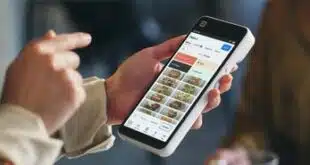While mobile wallets, near-field communication, and EMV have focused all eyes in the payments industry on the physical point of sale, some mobile-payments executives are starting to prepare for what they see as the fading away of the traditional checkout counter.
Technology already exists that allows customers to order ahead and pay, to order while standing in the aisle in front of the merchandise, and to pay for services like car rides without an actual checkout. Now some see these processes ultimately rendering in-store checkouts obsolete. “I don’t think people will be standing in line to pay much longer,” says Chris Gardner, head of in-store products at PayPal Holdings Inc. and chief product officer for Paydiant, a mobile-payments company PayPal acquired last year.
A standout example is mobile order and pay, an app that lets customers use their smart phones to specify what they want and pay for it. They then walk in later, pick up their order, and walk out. Square Inc. tried and failed with a mobile-order-and-pay app last year, but now others are seeing success.
Starbucks Coffee Co., which rolled out its Mobile Order and Pay app in September, reported in January the feature is racking up 6 million transactions monthly. More than 1 million customers used it in December alone, Starbucks said, adding that the iconic coffee chain had “just scratched the surface” with the app.
Starbucks is testing delivery options in Seattle and New York City, and has said it will introduce the feature in Canada and the United Kingdom.
Others are following suit. Mozido LLC, an Austin, Texas-based provider of mobile-payments technology for the point of sale, offers an application it calls noPOS, of which order-ahead is a key feature. “It’s a framework for checking out without having a point of sale involved,” Mike Love, president at Mozido, tells Digital Transaction News. “This is a significant trend for this year and next.”
Mozido offers NFC for point-of-sale payments, but relies on cloud technology like host card emulation (HCE) rather than chip-based storage of card credentials on the customer’s phone. That same technology can be leveraged, with tokenization, for noPOS transactions. “That’ll start cutting into NFC within a couple of years,” Love says. “It’s moving fast.”
This comes even as companies like Mozido have made considerable investments in NFC. Late in 2014, it took a majority interest in CorFire, an Alpharetta, Georgia-based vendor of NFC and trusted-service-manager products and services. CorFire had been a unit of South Korean information-technology provider SK C&C And, a year ago, Mozido paid $2.5 million for a stake in its Austin neighbor, SimplyTapp, which developed HCE software for NFC transactions.
The ultimate goal for some payments companies is to make the payment process entirely invisible to the consumer, much as Uber does with its car-hailing app. With this app, the user, who has already stored card credentials in the app, simply exits the car at the end of the ride. Payment happens in the background. Both Gardner and Love see this idea applying in stores.
That movement could soon trump all the work going into outfitting checkout counters for EMV and NFC. “The bigger trend I see in the U.S. is the movement away from the point of sale itself,” says Love. “It’s an Uberesque approach.”





